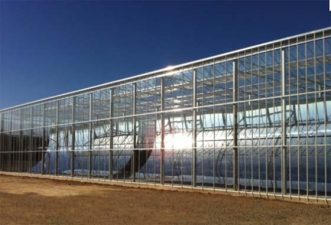 Six Gulf states hook up for profit
Six Gulf states hook up for profit
A few years late, phase two of the long-planned GCC Grid was inaugurated this week. When all four sections are complete it will unite the six Gulf nations on one unified electric grid, making it much easier to build and share power from renewable energy sources, and realize the gains in energy efficiency that come from sharing a wider grid. The cost savings could amount to Dh$18.4b – in US dollars, about $5 billion.
An analysis by Richard Tabor at Charles River Associates found a compelling economic case for the huge interconnected grid that, once complete, will link the power systems of the six Gulf countries. But the economic benefits are skewed. Saudi Arabia and Oman would be the clear winners, and Kuwait and Bahrain would come out even, while Qatar and the UAE might be negatively affected with higher energy costs.
That didn’t deter His Highness Sheikh Mohammed bin Rashid Al Maktoum, Vice President and Prime Minister of the UAE and Ruler of Dubai, from inaugurating phase two of the project, in a ceremony in Abu Dhabi this week.
The GCC Interconnection Project will connect the grids of the six Gulf states with both overhead electric lines and an underwater cable in the Arabian Gulf, at a cost of more than $1.4 billion. It will make it possible to create a common energy market and help grow sustainable energy supplies from solar projects and wind farms.
According to Gulf News, Saudi Arabia will be able to give and receive 1,200 megawatts, the UAE 900 megawatts and Qatar 750 megawatts. Nations are now negotiating to sell power to each other starting from next year. By facilitating sharing, the huge grid project will reduce electricity costs by making it possible to share the lowest cost generation on the grid.
Any nation could be penalized in the future if they don’t maintain a minimum reserve level to support their neighbors in an emergency. However, climate similarities mean that emergencies are likely to hit all of them at the same time. There is little difference among the six nations in peak load times, (the hottest part of the afternoons creating peak load occur at almost the same time across the region) so there is little to be gained by load swapping as a result of the project.
In addition, Saudi Arabia is in talks with the World Bank in connecting to the wider grid to the Desertec region and Europe.
Related stories:
Oil-Rich Gulf Invests $106 Billion in Six States of Rail Connections
World Bank to Fund Massive Grid Expansion To Link Desertec Region and the Arab World




Your map is incorrectly depicting the name of the PERSIAN Gulf. Please check your facts before publishing material like this in order to avoid reducing the credibility of your work and the ideas which you advocate.
http://en.wikipedia.org/wiki/Persian_Gulf_naming_dispute